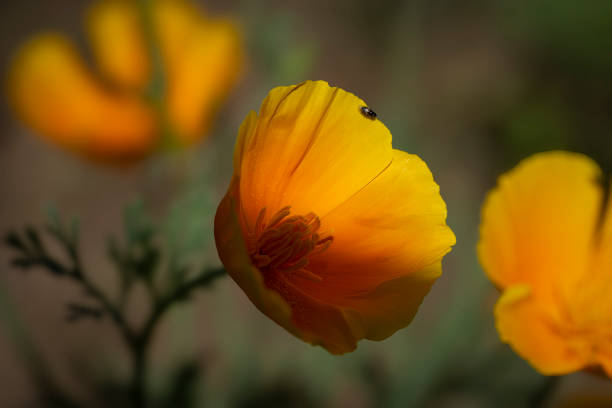California Poppy, known for its vibrant orange, yellow, and red flowers, can add a splash of color to any garden. Growing these stunning blooms is easier than you might think, even for novice gardeners. This article provides you with comprehensive steps and tips on cultivating California poppy successfully, ensuring that your garden thrives with these beautiful plants.
Selecting the Right Location

Choosing the optimal location is essential for growing healthy California poppies. These plants thrive in full sunlight, so it’s crucial to find a spot that receives at least six hours of direct sunlight each day. They tolerate partial shade, but the flower yield will be significantly reduced. The soil should be well-draining, as poppies do not perform well in waterlogged conditions. Sandy or loamy soil is ideal for ensuring proper drainage and root growth. Amend your soil with organic matter if it’s too compact or retains too much water, helping improve its structure and fertility.
Preparing the Soil
Preparation of the soil is a critical step in growing robust California poppies. Start by removing any weeds or debris from the area where you plan to plant the seeds. Loosen the top layer of soil to a depth of six to eight inches to ensure that the poppy roots can penetrate easily. Adding compost or well-rotted manure can significantly enhance soil fertility and structure. This organic matter improves drainage and provides the necessary nutrients for healthy plant growth. Ensure the soil is slightly acidic to neutral, with a pH range of 6.0 to 7.5. You can check the pH with a simple soil test kit available at garden centers.
Sowing the Seeds
California poppies are best grown from seeds, which can be directly sown into the garden. The best time to plant the seeds is in the fall or early spring, depending on your climate. To sow the seeds, scatter them evenly over the prepared soil surface, then lightly press them into the soil. Covering them with a thin layer of soil, no more than 1/8 inch deep, helps protect the seeds from wind and birds while allowing sunlight to reach them. The seeds require light to germinate, so avoid burying them too deep. Water the area gently, ensuring the soil remains moist but not saturated until germination occurs, typically within two to three weeks.
Caring for Your California Poppies
Once your California poppies have germinated and started to grow, they require minimal care. Regular watering is essential, especially during dry spells, to keep the soil consistently moist. However, avoid overwatering as this can lead to root rot. Mulch around the base of the plants to help retain moisture and deter weed growth. During the growing season, you can fertilize sparingly to promote robust flower production. Deadheading spent flowers encourages more blooms and prolongs the flowering period. Watch for pests such as aphids and use organic pest control methods if necessary.
Maintaining Healthy Growth
To sustain the health and vitality of your California poppy plants, it’s important to monitor their growth regularly. Poppies are generally low-maintenance, but a few proactive measures can prevent common issues. Ensure your plants do not become overcrowded; thinning seedlings to about six inches apart can help reduce competition for nutrients and space. Watch for fungal diseases, especially in humid climates. Good air circulation reduces the risk of disease, so avoid planting in excessively dense clusters. Using a balanced, slow-release fertilizer once or twice during the growing season can provide essential nutrients without overwhelming the plants.
Conclusion
Growing California poppies can be a rewarding experience, bringing a burst of color to your garden with minimal effort. By selecting the right location, preparing the soil, sowing the seeds correctly, and providing proper care, you can enjoy a vibrant display of these beautiful flowers throughout their blooming season. Remember, with a little patience and attention to detail, your garden can flourish with the radiant beauty of California poppies.
FAQ
-
Q:
How long do California poppies bloom?
A:
California poppies typically bloom from spring to early summer, though in mild climates, they may bloom almost year-round. -
Q:
Can California poppies grow in containers?
A:
Yes, California poppies can be grown in containers as long as the containers have good drainage and are placed in full sunlight. -
Q:
How often should I water California poppies?
A:
Water California poppies regularly to keep the soil moist, especially during dry spells, but avoid overwatering as this can cause root rot. -
Q:
Do California poppies need fertilizer?
A:
While California poppies don’t require heavy feeding, an occasional application of a balanced fertilizer can promote healthy growth and more blooms. -
Q:
Are California poppies invasive?
A:
In some areas, California poppies can self-seed aggressively, so it’s a good idea to monitor their spread to prevent them from becoming invasive.










